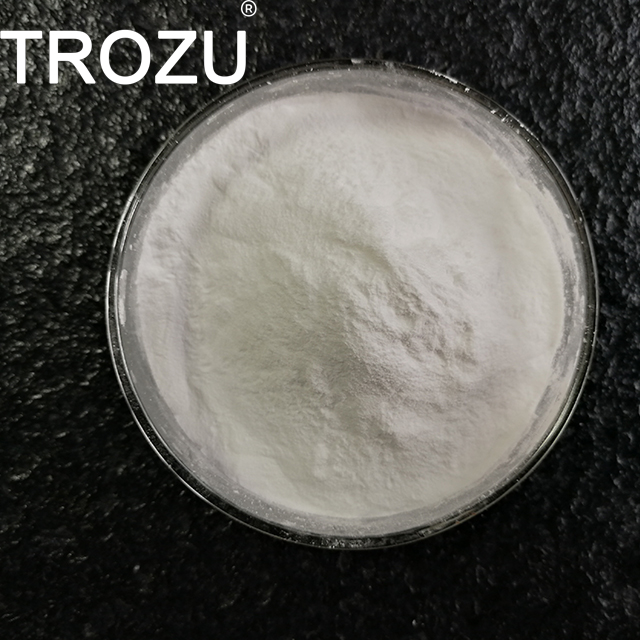发布日期:2018-06-29 浏览次数:6300
1, chlorinated polyethylene and chlorinated polyethylene CPE are obtained by replacing
chlorine atoms with hydrogen atoms on HDPE HDPE. CPE appearance is white powder,
nontoxic and tasteless.
2. Chlorinated polyethylene made from low pressure polyethylene HDPE has better heat
resistance and heat aging properties than chlorinated polyethylene made from high
pressure polyethylene. Polyethylene is commonly used to produce chlorinated polyethylene
with a density of 0.93 to 0.96g/cm3, an average molecular weight of 5~25, and a melt
index of 0.01 to 2.0g/10min polyethylene. Chlorination degree of chlorinated polyethylene
has great influence on its properties. The chlorine content is less than 15% when the
plastic is plastic; the chlorine content is from 16 to 24% is thermoplastic elastomer;
chlorine content is from 25 to 48% is rubber like elastomer; chlorine content is 49 to
58% as a leather like semi elastic hard polymer; when the content of chlorine is high
to 73%, it becomes brittle resin. About 27% of chlorine is introduced in high pressure
polyethylene, and the crystallization will disappear completely, and about 30% of
chlorine is introduced into the low pressure polyethylene with high crystallinity, and
the crystallization will disappear completely. As rubber elastomers, chlorine content is
best in the range of 30 to 40%. At present, chlorinated polyethylene rubber is
mostly in the range of 25 to 45%. When the content of chlorine increases, the
oil resistance, gas permeability and flame retardance will be improved. The chlorine
content decreases, and the cold resistance, resilience and compression bending
performance are better.
1) CPE is a saturated rubber with excellent heat and oxygen aging, ozone aging, acid
and alkali resistance, and chemical properties.
2) CPE has excellent oil resistance, among which ASTM 1 oil and ASTM 2 oil have
excellent performance, which is similar to NBR. The resistance to ASTM 3 is superior
to CR and is comparable to CSM.
3) CPE contains chlorine, which has excellent flame retardancy and combustion
resistance. The flame retardant material with good flame retardancy and low cost
can be obtained by proper proportions of the flame retardant, chlorinated paraffin
and Al (OH) 3 three.
4) CPE is non-toxic, does not contain heavy metals and PAHS, and is fully in line with
environmental protection requirements.
5) CPE has high filling performance and can produce products that meet various
performance requirements. CPE has good processability and ML121 1+4 is available
in 50-100 different brands.
3, chlorinated polyethylene can be divided into two types: resin type chlorinated
polyethylene (CPE) and elastic type chlorinated polyethylene (CM). It can be used
in addition to polyvinyl chloride (PVC), polyethylene (PE), polypropylene (PP),
polystyrene (PS), ABS and other resins, or even polyurethane (PU). In the rubber
industry, CPE can be used as a high performance, high quality special rubber, and
can also be blended with EPR, butyl rubber (IIR), nitrile rubber (NBR), Chlorsulfonated
polyethylene (CSM) and other rubber. Mainly used in: wire and cable (coal mine cable,
UL and VDE and other standards specified in the wire), hydraulic hose, car hose, tape,
rubber plate, PVC section tube modification, magnetic materials, ABS modification and so on.
4, CPE reinforcing agent is mainly carbon black and white carbon black; the filling
system mainly includes calcium carbonate, pottery clay and talcum powder. The
plasticizers are mainly DOA and DOS; the commonly used stabilizers for CPE
vulcanization are mainly sodium hard acid, Magnesium Oxide, barium stearate and
three base sulphate sulfate, which are mainly hydrogen chloride produced during
vulcanization.
5. CPE is a saturated rubber. The general sulphur vulcanization system can not
cure it effectively. The curing system is divided into four vulcanization systems:
thiourea system, peroxide system, thiazole two azole system and three azole
two mercapto amine salt system.

Guangzhou XiJia Chemical Co.,Ltd